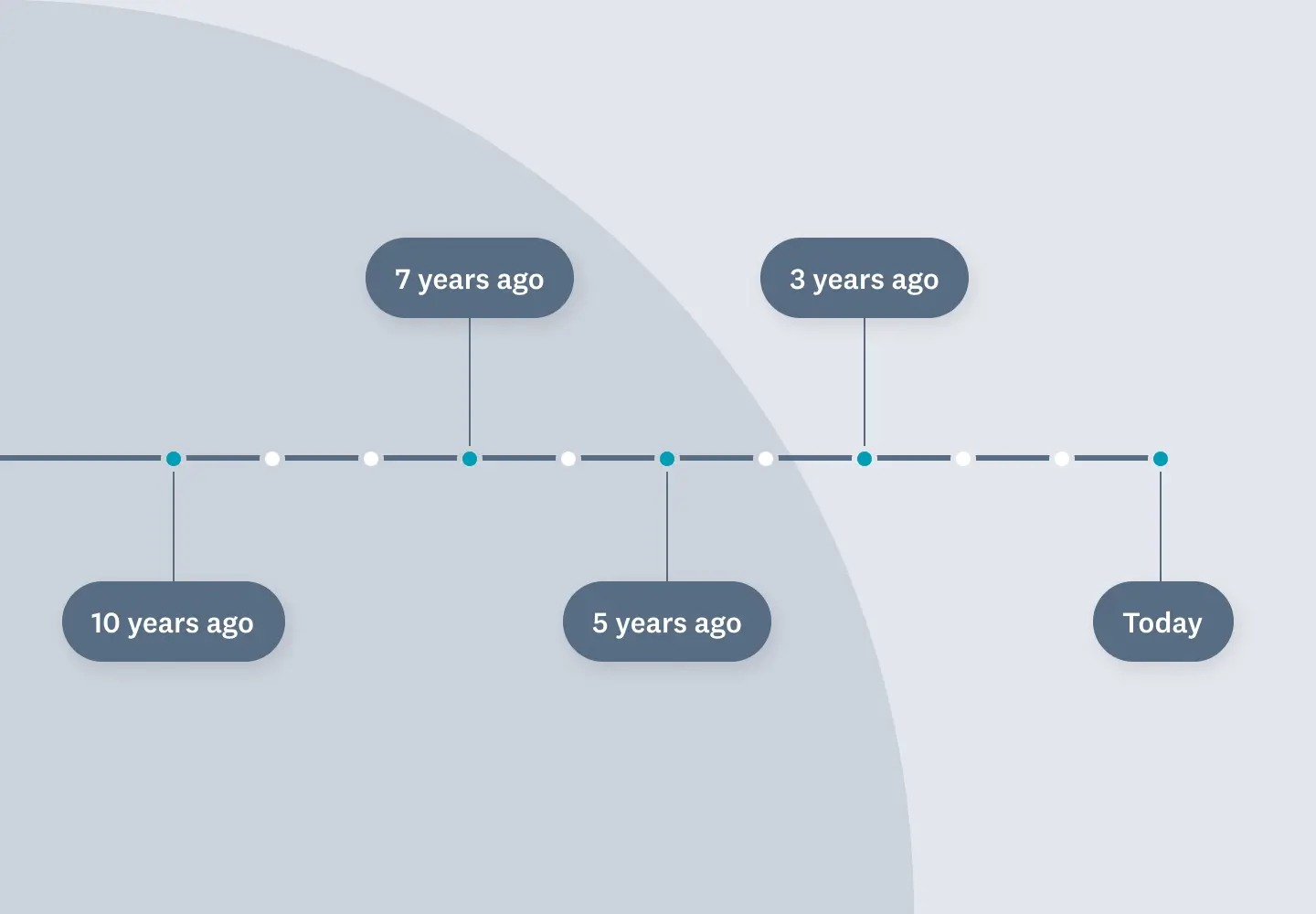Home>Finance>What Is Strategic Sourcing In Supply Chain Management?


Finance
What Is Strategic Sourcing In Supply Chain Management?
Modified: December 29, 2023
Learn what strategic sourcing is in supply chain management and how it impacts finance. Discover the benefits of implementing strategic sourcing strategies.
(Many of the links in this article redirect to a specific reviewed product. Your purchase of these products through affiliate links helps to generate commission for LiveWell, at no extra cost. Learn more)
Table of Contents
- Introduction
- Definition of Strategic Sourcing
- Importance of Strategic Sourcing in Supply Chain Management
- Key Elements of Strategic Sourcing
- Benefits and Advantages of Strategic Sourcing in Supply Chain Management
- Challenges and Limitations of Strategic Sourcing
- Best Practices for Implementing Strategic Sourcing in Supply Chain Management
- Case Studies and Examples of Successful Strategic Sourcing Initiatives
- Conclusion
Introduction
In today’s highly competitive business landscape, companies are constantly seeking ways to optimize their supply chain management practices to gain a competitive edge. One critical aspect of supply chain management is strategic sourcing. Strategic sourcing is a comprehensive approach that enables organizations to identify, evaluate, and select suppliers strategically to obtain the best value for their resources.
Strategic sourcing goes beyond simply finding low-cost suppliers; it focuses on creating long-term relationships with suppliers to drive continuous improvement, innovation, and overall value creation. By aligning sourcing decisions with overall business objectives, organizations can drive cost reductions, mitigate risks, improve quality, and enhance supply chain efficiency.
The main objective of strategic sourcing in supply chain management is to ensure that the right product is obtained from the right supplier, at the right time, and at the right price. It involves a structured and data-driven approach to supplier selection, contract negotiation, and ongoing supplier management.
Strategic sourcing requires a deep understanding of the organization’s supply chain, including its internal and external factors, market dynamics, and supplier capabilities. It involves collaboration across various functions, such as procurement, operations, finance, and logistics, to make informed sourcing decisions.
In today’s globalized economy, strategic sourcing has become even more critical. Organizations often source components, raw materials, and services from suppliers located in different countries and regions. This complexity adds another layer of challenges, such as language barriers, cultural differences, and regulatory compliance.
With the advancement of technology and the availability of data analytics, organizations now have access to vast amounts of information that can support their strategic sourcing efforts. Leveraging data analytics tools and technologies can provide valuable insights into supplier performance, market trends, and potential risks, enabling organizations to make proactive and informed sourcing decisions.
In the following sections, we will delve deeper into the definition, importance, key elements, benefits, challenges, and best practices of strategic sourcing in supply chain management. We will also explore real-world case studies and examples of successful strategic sourcing initiatives.
Definition of Strategic Sourcing
Strategic sourcing is an approach to procurement and supplier management that focuses on long-term value creation for the organization. It involves a systematic and data-driven process of identifying, evaluating, and selecting suppliers based on specific criteria that align with the organization’s strategic goals and objectives.
At its core, strategic sourcing is about more than just finding cost-effective suppliers. It emphasizes the importance of building and nurturing relationships with suppliers to drive collaboration, innovation, and continuous improvement throughout the supply chain.
Strategic sourcing involves a multidimensional evaluation of suppliers, considering factors such as quality, reliability, financial stability, delivery capabilities, technological capabilities, sustainability, and ethical practices. By taking a holistic view of supplier capabilities, organizations can make informed decisions that go beyond cost savings and contribute to overall operational excellence.
The key principles of strategic sourcing include:
- Supplier Evaluation: Assessing suppliers based on predefined criteria to determine their suitability for the organization’s needs.
- Supplier Selection: Choosing suppliers that align with the organization’s strategic objectives and can provide the best value.
- Contract Negotiation: Engaging in collaborative and mutually beneficial negotiations to establish favorable terms and conditions.
- Supplier Management: Monitoring supplier performance, fostering transparency, and holding suppliers accountable for meeting defined objectives and metrics.
- Continuous Improvement: Engaging in ongoing dialogue with suppliers to drive innovation, process improvements, and cost reductions.
Strategic sourcing is not a one-time event, but rather an ongoing process that requires continuous monitoring and assessment of supplier performance and market conditions. It involves maintaining a robust supplier database and regularly updating supplier information to reflect changes in capabilities, pricing, and other relevant factors.
By implementing strategic sourcing practices, organizations can achieve several benefits, including cost reductions, improved quality, increased supply chain resilience, enhanced supplier relationships, and better alignment with overall business objectives.
In the next section, we will explore the importance of strategic sourcing in supply chain management.
Importance of Strategic Sourcing in Supply Chain Management
Strategic sourcing plays a crucial role in supply chain management by helping organizations optimize their procurement processes and drive sustainable value creation. Here are some key reasons why strategic sourcing is important:
- Cost Reduction: One of the primary goals of strategic sourcing is to identify cost-saving opportunities. By engaging in strategic supplier evaluation and negotiation, organizations can find suppliers that offer competitive pricing, favorable terms, and lower total cost of ownership. This leads to significant cost reductions and improved profitability.
- Improved Supplier Relationships: Strategic sourcing emphasizes building strong and collaborative relationships with suppliers. By selecting suppliers based on their capabilities, reliability, and alignment with the organization’s goals, organizations can foster long-term partnerships. Strong supplier relationships can lead to better cooperation, improved communication, and shared innovation, resulting in a competitive advantage.
- Enhanced Quality and Reliability: Strategic sourcing involves evaluating suppliers’ quality standards and track record. By selecting suppliers with a proven history of delivering high-quality products and services, organizations can ensure consistent quality and reliability in their supply chain. This reduces the risk of defects, rework, and disruptions, leading to improved customer satisfaction.
- Supply Chain Resilience: Strategic sourcing helps organizations diversify their supplier base, reducing dependence on a single source. This enhances supply chain resilience by mitigating the impact of potential disruptions, such as natural disasters, geopolitical events, or supplier bankruptcies. By having alternative suppliers in place, organizations can maintain continuity and minimize operational disruptions.
- Risk Mitigation: Strategic sourcing involves thorough evaluation of suppliers’ financial stability, ethical practices, and compliance with regulations. This helps organizations mitigate the risks associated with supplier non-compliance, reputational damage, or supply chain disruptions due to unethical practices. By selecting suppliers with strong ethical standards and compliance records, organizations can safeguard their brand reputation.
Overall, strategic sourcing enables organizations to make informed decisions that align with their overall business objectives. It allows them to optimize their supply chain, reduce costs, improve quality, enhance supplier relationships, and effectively manage risks. By implementing strategic sourcing practices, organizations can gain a competitive edge in the market and achieve long-term success.
In the next section, we will explore the key elements of strategic sourcing in supply chain management.
Key Elements of Strategic Sourcing
Strategic sourcing is a comprehensive approach to supplier management that involves several key elements. These elements are crucial for organizations to effectively implement strategic sourcing practices in their supply chain management processes. Here are the key elements of strategic sourcing:
- Supplier Segmentation: Strategic sourcing begins with segmenting suppliers based on their strategic importance and impact on the organization’s supply chain. Suppliers may be classified into different categories based on criteria such as spend volume, criticality of supply, and strategic alignment. This segmentation helps organizations prioritize their sourcing efforts and allocate resources accordingly.
- Supplier Evaluation and Selection: Once suppliers are segmented, organizations need to perform a rigorous evaluation to assess their capabilities and suitability. This evaluation includes factors such as quality, reliability, financial stability, technological capabilities, and sustainability. Based on the evaluation results, organizations can then select the most suitable suppliers that align with their strategic objectives.
- Contract Negotiation: Strategic sourcing involves engaging in collaborative negotiations with selected suppliers to establish favorable terms and conditions. This includes price negotiation, contract duration, service levels, performance metrics, and any specific requirements. Effective contract negotiation ensures that both parties have a clear understanding of their responsibilities and expectations.
- Supplier Relationship Management: Building and maintaining strong supplier relationships is a critical element of strategic sourcing. Organizations should actively manage and nurture relationships with suppliers to drive collaboration, innovation, and continuous improvement. This involves regular communication, performance monitoring, feedback sharing, and joint problem-solving.
- Performance Monitoring and Measurement: To ensure that suppliers meet defined objectives and deliver expected value, organizations need to establish performance metrics and regularly monitor supplier performance. This includes tracking key performance indicators (KPIs), conducting supplier scorecards, and addressing any performance issues promptly.
- Risk Management: Strategic sourcing involves assessing and mitigating risks associated with suppliers and the overall supply chain. This includes evaluating suppliers’ financial stability, monitoring geopolitical risks, ensuring regulatory compliance, and implementing contingency plans to minimize disruption risks.
- Continuous Improvement: Strategic sourcing is an ongoing process that requires organizations to continuously evaluate and improve their sourcing practices. This involves seeking feedback from suppliers, identifying areas for improvement, implementing changes, and driving innovation throughout the supply chain.
By incorporating these key elements into their strategic sourcing practices, organizations can effectively manage their suppliers, drive value creation, and achieve long-term success in their supply chain management efforts.
In the next section, let’s explore the benefits and advantages of strategic sourcing in supply chain management.
Benefits and Advantages of Strategic Sourcing in Supply Chain Management
Implementing strategic sourcing practices in supply chain management can bring numerous benefits and advantages to organizations. Here are some key benefits of strategic sourcing:
- Cost Savings: Strategic sourcing allows organizations to identify cost-saving opportunities by selecting suppliers with competitive pricing, negotiating favorable terms, and optimizing the total cost of ownership. Through effective supplier evaluation and negotiation, organizations can achieve significant cost reductions, leading to improved profitability.
- Improved Quality: Strategic sourcing involves selecting suppliers based on their quality standards, track record, and reliability. By working with high-quality suppliers, organizations can ensure consistent quality in their products or services. This reduces the risk of defects, rework, and customer dissatisfaction, leading to improved customer loyalty and brand reputation.
- Enhanced Supplier Relationships: Building strong and collaborative relationships with suppliers is a key advantage of strategic sourcing. By selecting suppliers based on their capabilities and strategic alignment, organizations can foster long-term partnerships. Strong supplier relationships promote better communication, trust, and knowledge sharing, resulting in shared innovation, improved responsiveness, and agility within the supply chain.
- Supply Chain Resilience: Strategic sourcing helps organizations diversify their supplier base, reducing dependence on a single source. This diversification enhances supply chain resilience, as it minimizes the impact of potential disruptions. By having alternative suppliers in place, organizations can ensure the continuity of their operations, even in the face of natural disasters, geopolitical events, or supplier failures.
- Increased Supply Chain Efficiency: Through strategic sourcing, organizations can optimize their supplier selection and contract negotiation processes. This streamlines the procurement process, reduces lead times, and improves supply chain efficiency. Proper supplier management and performance monitoring also enable organizations to identify areas for process improvement and drive operational excellence.
- Risk Mitigation: Strategic sourcing involves evaluating suppliers’ financial stability, regulatory compliance, and ethical practices. By selecting reliable and ethical suppliers, organizations can mitigate the risks associated with supplier non-compliance, reputational damage, and supply chain disruptions. This helps protect the organization’s brand reputation and ensures compliance with industry regulations.
- Access to Innovation: Engaging in strategic partnerships with suppliers can provide organizations with access to the latest technologies, market insights, and industry best practices. By collaborating with suppliers, organizations can tap into their expertise and drive innovation. This enables organizations to stay competitive, adapt to market trends, and identify new opportunities for growth.
Overall, strategic sourcing brings numerous benefits that positively impact an organization’s bottom line and overall competitiveness. By reducing costs, improving quality, enhancing supplier relationships, and mitigating risks, organizations can achieve operational excellence, drive value creation, and strengthen their position in the marketplace.
In the next section, we will discuss the challenges and limitations of strategic sourcing.
Challenges and Limitations of Strategic Sourcing
While strategic sourcing offers significant benefits, it is not without its challenges and limitations. Understanding and addressing these challenges is crucial for organizations to successfully implement strategic sourcing practices. Here are some common challenges and limitations of strategic sourcing:
- Supplier Selection: Identifying and selecting the right suppliers can be a complex process. It requires thorough evaluation, extensive due diligence, and consideration of various factors such as quality, reliability, and cultural fit. Organizations may face challenges in finding suppliers that meet all their criteria and align with their strategic objectives.
- Supply Chain Complexity: As supply chains become more globalized and interconnected, managing the complexity becomes a challenge. Different regulations, cultural differences, and language barriers can create complications in supplier management and communication. Organizations need to invest in additional resources and technologies to navigate these challenges effectively.
- Information Availability: Accurate and up-to-date information about suppliers, market trends, and industry insights is crucial for effective strategic sourcing. However, obtaining this information can be challenging, especially when dealing with diverse suppliers located in different regions. Organizations may need to invest in data analytics tools and market intelligence resources to overcome this limitation.
- Risk Management: While strategic sourcing aims to mitigate risks, it is not entirely foolproof. Organizations need to continuously monitor and assess suppliers for potential risks, including financial stability, compliance, and operational disruptions. Sudden changes in the market or unforeseen events can still pose risks that require proactive management and contingency planning.
- Organizational Alignment: Strategic sourcing requires strong alignment across various functions within the organization, including procurement, operations, finance, and supply chain. Lack of collaboration and coordination among these departments can hinder the implementation of strategic sourcing practices and limit its effectiveness.
- Supplier Relationship Management: Building and nurturing strong supplier relationships require time, effort, and resources. Organizations need to invest in supplier relationship management capabilities to ensure effective communication, address conflicts, and foster collaboration. Failure to do so can result in strained relationships, poor supplier performance, and reduced value creation.
- Internal Resistance to Change: Implementing strategic sourcing practices may face resistance from internal stakeholders who are accustomed to traditional procurement methods. Resistance to change can slow down the adoption of strategic sourcing initiatives and hinder their success. Organizations need to invest in change management strategies and promote the benefits of strategic sourcing to overcome this limitation.
Despite these challenges and limitations, organizations can overcome them by adopting best practices, investing in the right resources and technologies, and fostering a culture of continuous improvement and collaboration. Strategic sourcing, when effectively implemented, can yield significant benefits and advantages for organizations in their supply chain management efforts.
In the next section, we will discuss best practices for implementing strategic sourcing in supply chain management.
Best Practices for Implementing Strategic Sourcing in Supply Chain Management
Implementing strategic sourcing practices requires careful planning, collaboration, and a focus on continuous improvement. By following best practices, organizations can maximize the benefits of strategic sourcing in their supply chain management efforts. Here are some key best practices for implementing strategic sourcing:
- Develop a Sourcing Strategy: Start by developing a comprehensive sourcing strategy that aligns with the organization’s overall business objectives. This strategy should outline the goals, criteria, and processes for supplier evaluation, selection, and management.
- Segment Suppliers: Segment suppliers based on their importance and impact on the organization’s supply chain. This segmentation helps allocate resources effectively and prioritize sourcing efforts based on spend volume, criticality, and strategic alignment.
- Conduct Thorough Supplier Evaluation: Rigorously assess suppliers based on defined criteria, such as quality, reliability, financial stability, and technological capabilities. Use a combination of quantitative and qualitative evaluation methods to gain a holistic view of supplier capabilities.
- Negotiate Favorable Contracts: Engage in collaborative negotiations with selected suppliers to establish favorable terms and conditions. Negotiate pricing, contract duration, service levels, and performance metrics to secure optimal value for the organization.
- Establish Supplier Performance Metrics: Define key performance indicators (KPIs) to monitor supplier performance. Establish regular reporting mechanisms and scorecards to track performance and address any issues promptly. This ensures suppliers meet defined objectives and deliver the expected value.
- Cultivate Strong Supplier Relationships: Build and nurture collaborative relationships with suppliers based on trust and open communication. Foster transparency, share feedback, and engage in regular relationship-building activities to promote supplier loyalty and mutual success.
- Continuously Monitor Market Trends: Stay updated on market trends, industry dynamics, and supplier capabilities. Leverage data analytics and market intelligence resources to gain insights that inform sourcing decisions and adapt to changing market conditions.
- Implement Risk Mitigation Strategies: Assess and mitigate risks associated with suppliers and the overall supply chain. Continuously monitor risks such as financial stability, compliance, and geopolitical factors. Develop contingency plans to minimize the impact of potential disruptions.
- Invest in Supplier Collaboration: Encourage collaboration and innovation with suppliers. Engage in joint problem-solving, share best practices, and explore opportunities for process improvements and cost reductions throughout the supply chain.
- Drive Continuous Improvement: Continuously evaluate and enhance strategic sourcing practices. Seek feedback from suppliers, measure performance, and identify areas for improvement. Promote a culture of continuous improvement to optimize sourcing processes and deliver increased value.
By adopting these best practices, organizations can enhance their strategic sourcing capabilities and drive value creation in their supply chain management processes. Strategic sourcing, when implemented effectively, enables organizations to optimize costs, enhance supplier relationships, improve quality, and mitigate risks.
In the next section, we will explore examples of successful strategic sourcing initiatives through real-world case studies.
Case Studies and Examples of Successful Strategic Sourcing Initiatives
Several organizations have successfully implemented strategic sourcing initiatives to drive value and gain a competitive advantage in their supply chain management. Let’s explore some case studies and examples of these successful strategic sourcing initiatives:
- Procter & Gamble (P&G): P&G, a global consumer goods company, implemented a strategic sourcing initiative that transformed its procurement function. By adopting a category management approach, P&G achieved significant cost savings and improved supplier collaboration. They segmented their suppliers, developed supplier scorecards, and negotiated global contracts to consolidate spend and leverage economies of scale. P&G’s strategic sourcing practices resulted in lower costs, enhanced supplier partnerships, and improved operational efficiency.
- Walmart: As one of the world’s largest retailers, Walmart has implemented strategic sourcing practices to optimize its supply chain. They have established long-term relationships with suppliers and engaged in collaborative partnerships to drive innovation and cost reductions. Walmart’s strategic sourcing initiatives involve data analytics to identify trends, improve forecasting, and make informed sourcing decisions. By leveraging their vast supplier network and implementing strategic sourcing practices, Walmart has achieved cost savings, improved product quality, and increased efficiency in their supply chain.
- Toyota: Toyota, a global automotive manufacturer, has been implementing strategic sourcing practices to drive continuous improvement in its supply chain. They have implemented a Just-In-Time (JIT) inventory system that requires close collaboration with suppliers and ensures timely delivery of parts. Toyota’s strategic sourcing initiatives include evaluating suppliers based on quality, reliability, and continuous improvement capabilities. These practices have allowed Toyota to maintain a lean and efficient supply chain, reduce costs, and improve overall operational performance.
- Apple Inc.: Apple Inc., a technology leader, has implemented strategic sourcing to ensure a sustainable and secure supply chain. Apple’s strategic sourcing practices involve assessing suppliers’ environmental and labor practices, as well as their ability to adhere to ethical standards. By selecting suppliers with strong sustainability records, Apple has been able to enhance its brand reputation and meet the growing demand for socially responsible products. Their strategic sourcing initiatives have enabled them to mitigate supply chain risks, improve supplier relationships, and drive innovation.
- Johnson & Johnson: Johnson & Johnson, a leading healthcare company, has implemented strategic sourcing practices to optimize their procurement processes. They have implemented a supplier segmentation strategy to prioritize spend and develop strategic supplier relationships. By engaging in collaborative negotiations and establishing performance metrics, Johnson & Johnson has achieved cost reduction, improved quality control, and enhanced supplier partnerships. Their strategic sourcing initiatives have enabled them to streamline their supply chain, reduce risk, and ensure the timely availability of critical healthcare products.
These case studies highlight the successful implementation of strategic sourcing practices by organizations across different industries. By adopting strategic sourcing as a fundamental part of their supply chain management, these companies have achieved various benefits, including cost savings, improved supplier relationships, enhanced quality, and increased operational efficiency.
These examples demonstrate the importance of strategic sourcing and provide insights into how organizations can leverage strategic sourcing practices to drive value creation and achieve supply chain excellence.
In the final section, we will conclude our discussion on strategic sourcing in supply chain management.
Conclusion
Strategic sourcing is a vital component of effective supply chain management, enabling organizations to optimize costs, improve quality, enhance supplier relationships, and mitigate risks. By following best practices and embracing strategic sourcing principles, companies can gain a competitive edge in the market by driving value creation and operational excellence.
In this article, we explored the definition of strategic sourcing and its importance in supply chain management. We discussed the key elements of strategic sourcing, including supplier segmentation, evaluation, contract negotiation, and supplier relationship management. Additionally, we examined the benefits of strategic sourcing, such as cost savings, improved quality, supply chain resilience, and increased efficiency.
However, implementing strategic sourcing comes with its own set of challenges and limitations. Organizations need to address these challenges by investing in information availability, risk management strategies, supplier collaboration, and internal alignment. By overcoming these obstacles, organizations can maximize the benefits of strategic sourcing and achieve sustainable success in their supply chain management efforts.
Real-world case studies from companies such as Procter & Gamble, Walmart, Toyota, Apple, and Johnson & Johnson have demonstrated the positive impact of strategic sourcing on business performance. These organizations have leveraged strategic sourcing to optimize costs, drive innovation, improve supplier relationships, and ensure supply chain resiliency.
In conclusion, strategic sourcing is an essential practice that organizations should integrate into their supply chain management strategies. By implementing strategic sourcing best practices, organizations can achieve significant cost savings, improve quality, enhance supplier relationships, and better manage risks. Strategic sourcing not only contributes to the bottom line but also enables organizations to adapt to the dynamic business landscape and position themselves for long-term success.
As organizations continue to navigate complex supply chains and evolving market conditions, strategic sourcing will remain a critical tool for optimizing procurement processes, driving value, and maintaining a competitive advantage.














